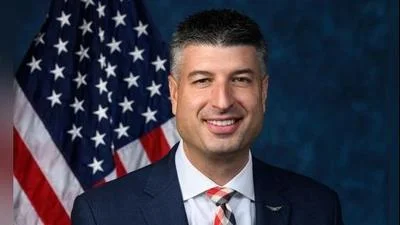Kevin M. Guskiewicz President at Michigan State University | Official website
Kevin M. Guskiewicz President at Michigan State University | Official website
Michigan State University researchers have discovered that honeybees can detect biomarkers or chemical concentrations associated with lung cancer in human breath. The researchers have also shown that the honeybees can distinguish between different lung cancer cell types using only the ‘smell’ of the cell cultures. These findings could be used as a model for developing new tests to diagnose lung cancer early.
“Insects have an amazing sense of smell the same way dogs do,” said Debajit Saha, an assistant professor in the College of Engineering and MSU’s Institute for Quantitative Health Science and Engineering.
Saha and his team aimed to determine if honeybees could distinguish between the chemicals in human breath from someone who was healthy compared to someone with lung cancer. Elyssa Cox, Saha’s former lab manager, and Michael Parnas, a doctoral candidate working in Saha’s lab, developed a “recipe” for a synthetic breath mixture using different levels of six compounds such as trichloroethylene and 2-methylheptane to create the chemical makeup of the breath of someone with lung cancer and a synthetic healthy breath mixture.
“It took a steady hand to create the recipe,” said Cox. “We tested the synthetic lung cancer versus healthy human breath mixtures on approximately 20 bees.”
Cox helped design a custom 3D-printed harness to hold a live honeybee while she attached a tiny electrode to its brain to measure any changes in the bee’s brain signals.
“We pass those odors on to the antenna of the honeybees and recorded the neural signals from their brain,” said Saha. “We see a change in the honeybee’s neural firing response.”
The researchers also wanted to measure how much of the cancer-indicating compounds needed to be present in someone’s breath for the honeybee to detect cancer.
“The honeybees detected very small concentrations; it was a very strong result,” said Saha. “Bees can differentiate between minute changes in the chemical concentrations of the breath mixture which is in parts per billion range.”
Parnas analyzed the neural data and observed spikes in bees’ brain signals.
“We can see differences in how the honeybees are smelling,” said Parnas. “We detected several different neurons firing in bees’ brains that clearly differentiated between synthetic lung cancer breath and healthy breath.”
Another graduate student from Saha's team, Autumn McLane-Svoboda, along with undergraduate Summer McLane-Svoboda, jointly led human lung cancer cell culture experiments with assistance from Christopher Contag, director of Michigan State University’s Institute for Quantitative Health Science and Engineering, and his lab. For these experiments, different types of human lung cancer cell cultures were grown in closed airtight flasks, and a honeybee brain-based sensor was used to test their odor. The researchers successfully demonstrated that this sensor could distinguish between small cell lung cancer, non-small cell lung cancers, and healthy cells.
“What’s amazing is bees' ability not only to detect cancer cells but also distinguish between various types of lung cancer cell lines,” said Autumn McLane-Svoboda. “The future implications for this are huge as our sensor could allow patients to receive specific diagnoses quickly which is imperative for correct treatment routes.”
Saha envisions this work will pave the way for more biological and smell-based disease detection technologies. In future developments, Saha's team plans to create a noninvasive test requiring patients only breathe into a device equipped with sensors based on bee brains that would analyze their breath and wirelessly report back if cancer chemicals are present.
The research was published in Biosensors and Bioelectronics.





 Alerts Sign-up
Alerts Sign-up